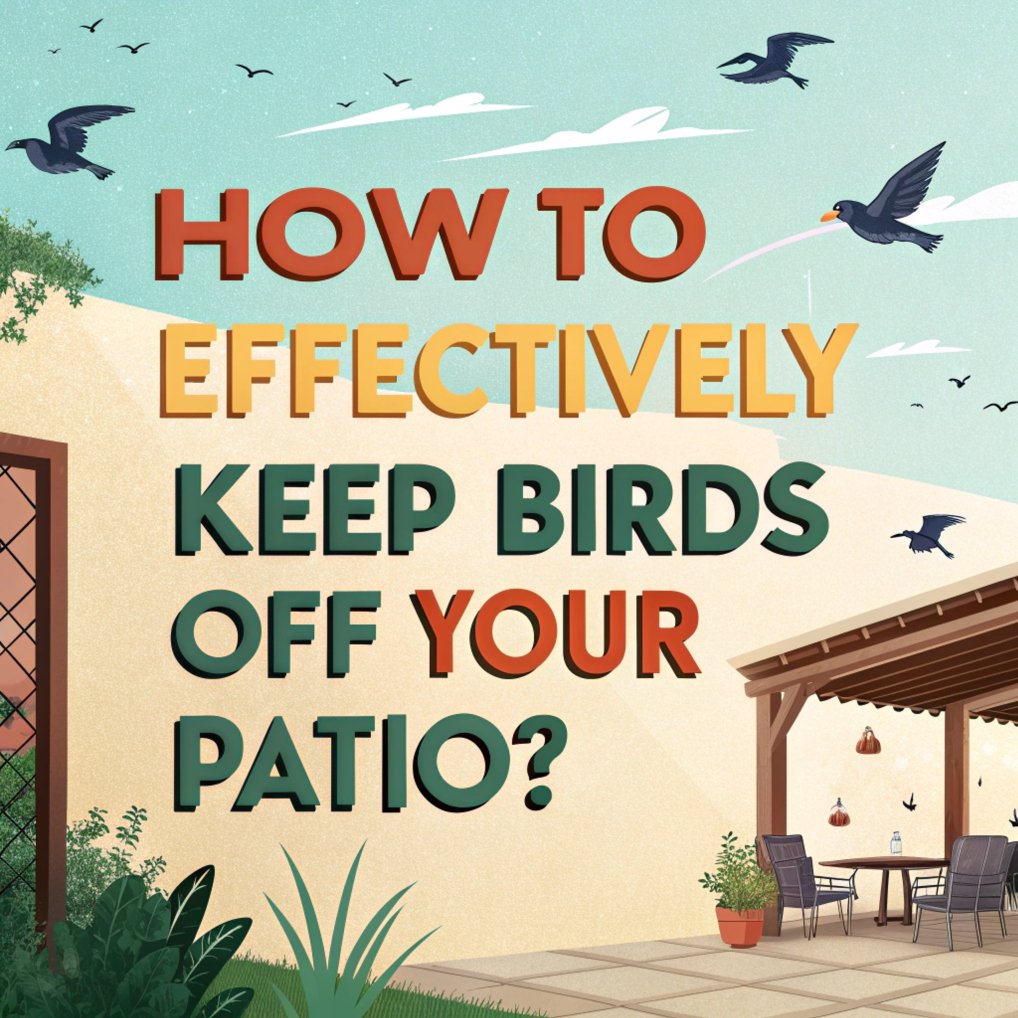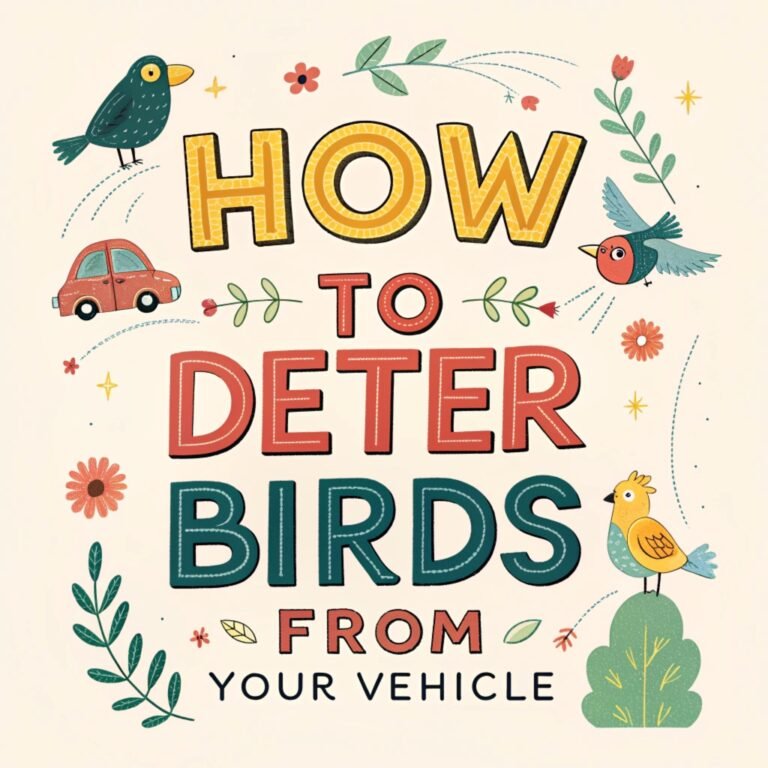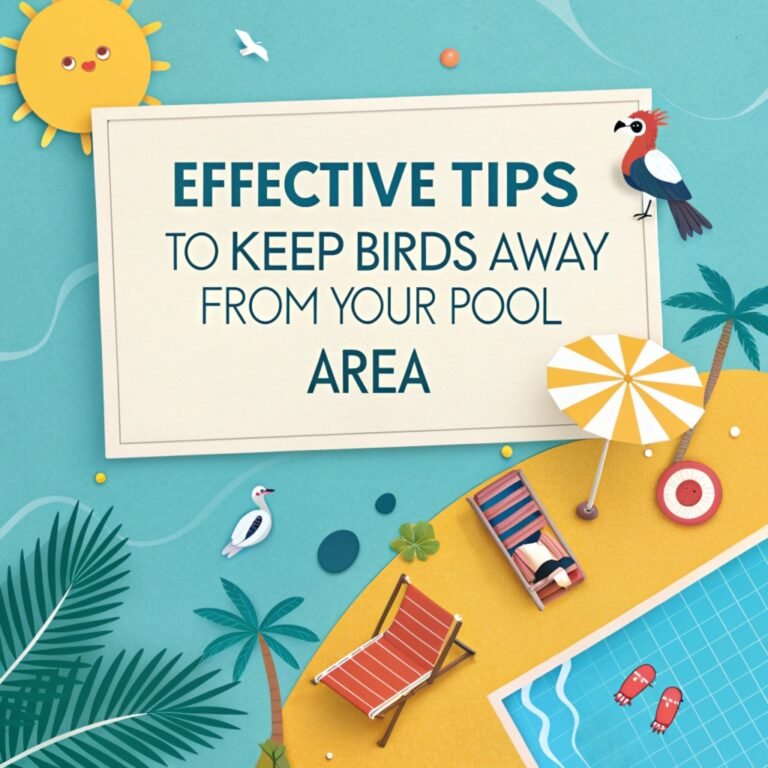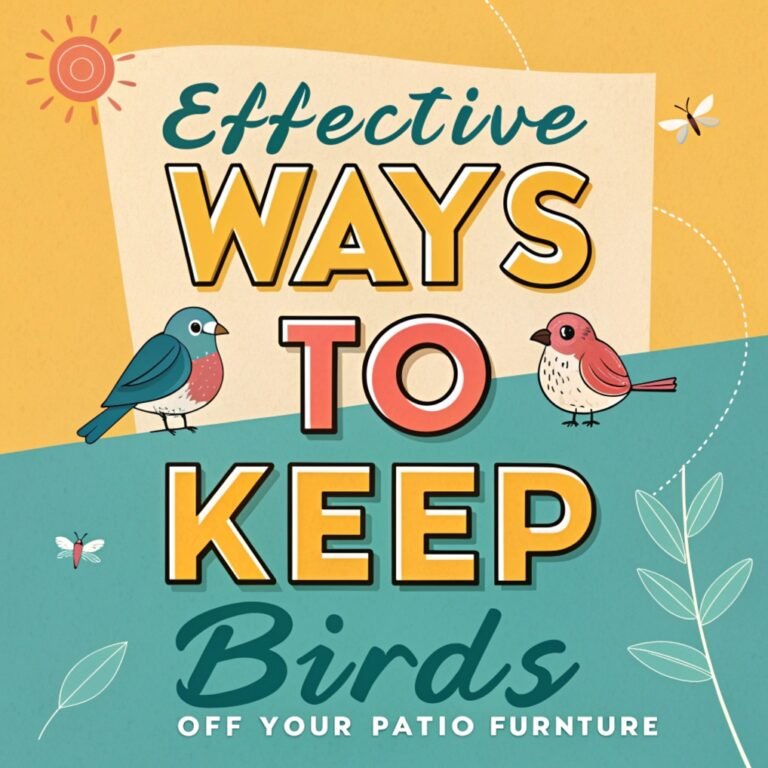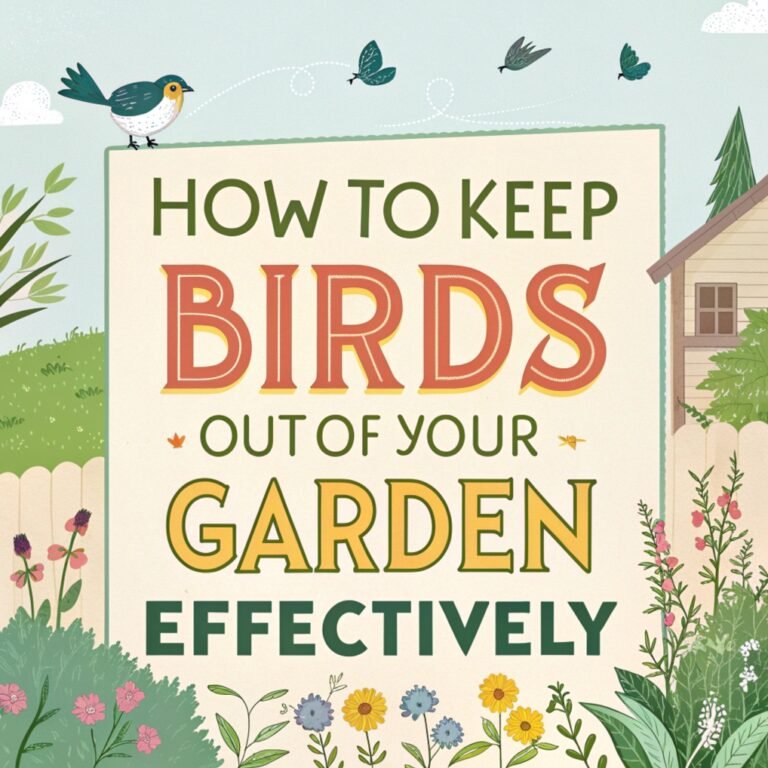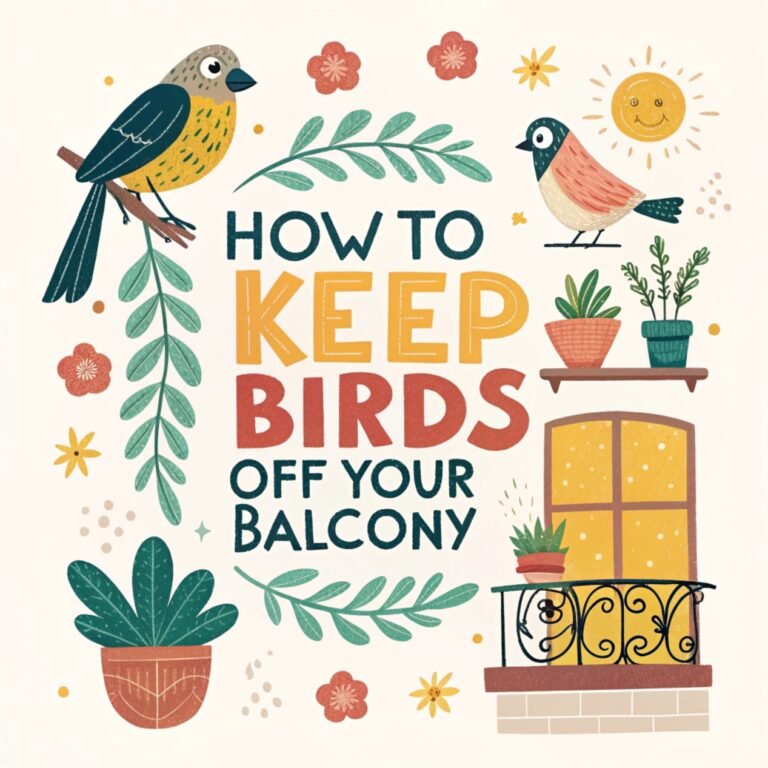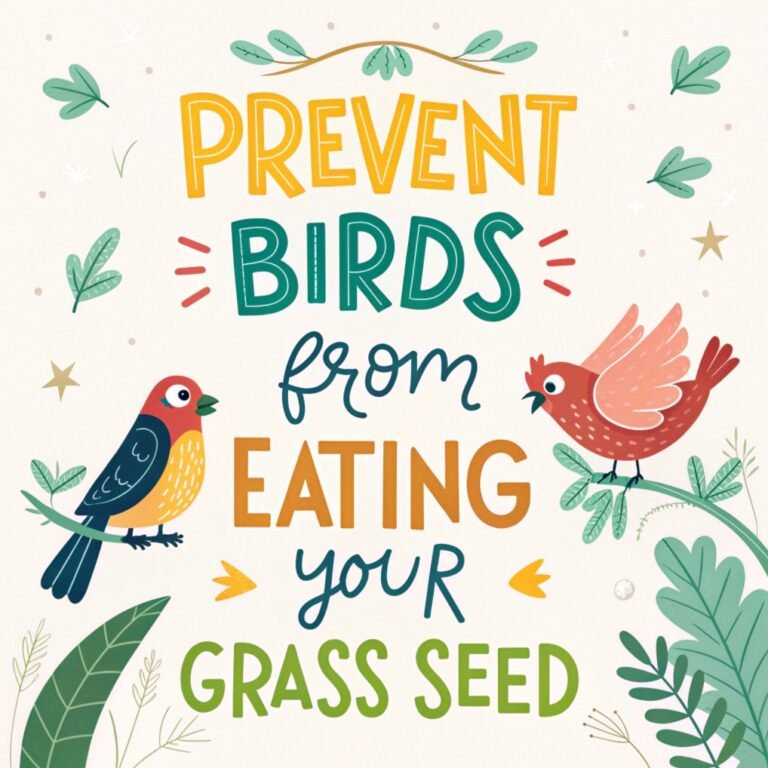How to Effectively Keep Birds Off Your Patio? – Reclaiming Your Outdoor Space
While birds can be delightful to observe in nature, their presence on your patio can quickly become a nuisance.
From unwanted droppings to disruptive noises, birds can significantly impact your enjoyment of your outdoor living space.
This comprehensive guide is designed to help you reclaim your patio from our feathered friends, offering a range of effective, humane, and practical solutions.
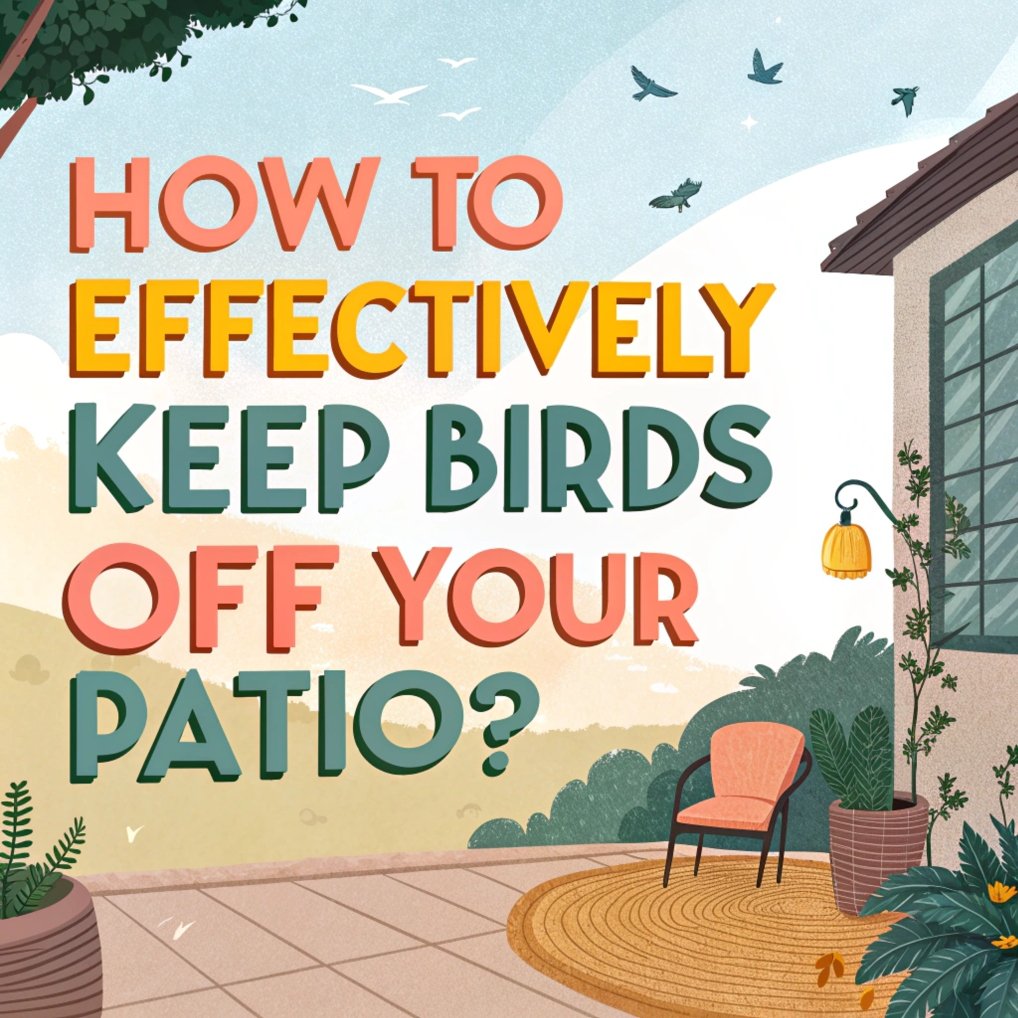
Key Takeaways:
- Understand Bird Attractions: Recognize that birds are drawn to your patio for food, water, and shelter. By identifying these factors, you can target your deterrent efforts more effectively.
- Remove Food Sources: Consistently clean up after meals, secure trash cans, and avoid feeding pets outdoors to eliminate easy food access for birds.
- Implement Physical Barriers: Use bird netting or spikes to create uncomfortable landing zones without harming the birds.
- Utilize Visual and Sound Deterrents: Employ reflective objects, predator decoys, wind chimes, and ultrasonic devices to create an unwelcoming environment for birds.
- Create Aromatic Barriers: Use natural scents like citrus and peppermint to repel birds while keeping your patio fresh.
- Modify the Surrounding Habitat: Trim nearby trees and eliminate standing water to reduce attractive perching and bathing spots.
- Install Motion-Activated Sprinklers: Surprise visiting birds with sudden water sprays to discourage repeated visits.
- Maintain Cleanliness: Regular patio cleaning removes food residues and makes the area less appealing to birds.
- Choose Bird-Resistant Furniture: Opt for smooth-surfaced furniture and decor that doesn’t provide easy perching spots.
- Educate Family and Guests: Ensure everyone understands and follows bird deterrent practices to maintain a consistent approach.
By implementing these strategies, you can create a multi-faceted defense against unwanted bird visitors, ensuring your patio remains a comfortable and enjoyable space for you and your guests. Remember, the key to success lies in combining multiple methods and remaining persistent in your efforts.
Understanding Why Birds Are Attracted to Your Patio
Your patio is more than just an extension of your living space; it’s a haven for relaxation and outdoor enjoyment. However, it can also be an irresistible attraction for birds. These feathered visitors are drawn to patios for several reasons.
Primarily, they seek food, water, and shelter – all of which your patio might inadvertently provide.
Crumbs from outdoor meals, pet food left outside, and even small insects can be a feast for birds. Standing water in planters or decorative features serves as a convenient drinking and bathing spot.
The structure of your patio, with its beams, rafters, and corners, offers perfect perching and nesting locations.
Understanding these attractions is the first step in effectively deterring birds. By recognizing what draws them to your space, you can strategically address each factor.
This knowledge allows you to create an environment that’s less appealing to birds while still maintaining the beauty and functionality of your patio.
Remember, birds are simply following their natural instincts, so our goal is to gently discourage them rather than harm them.
Removing Food Sources: The First Line of Defense
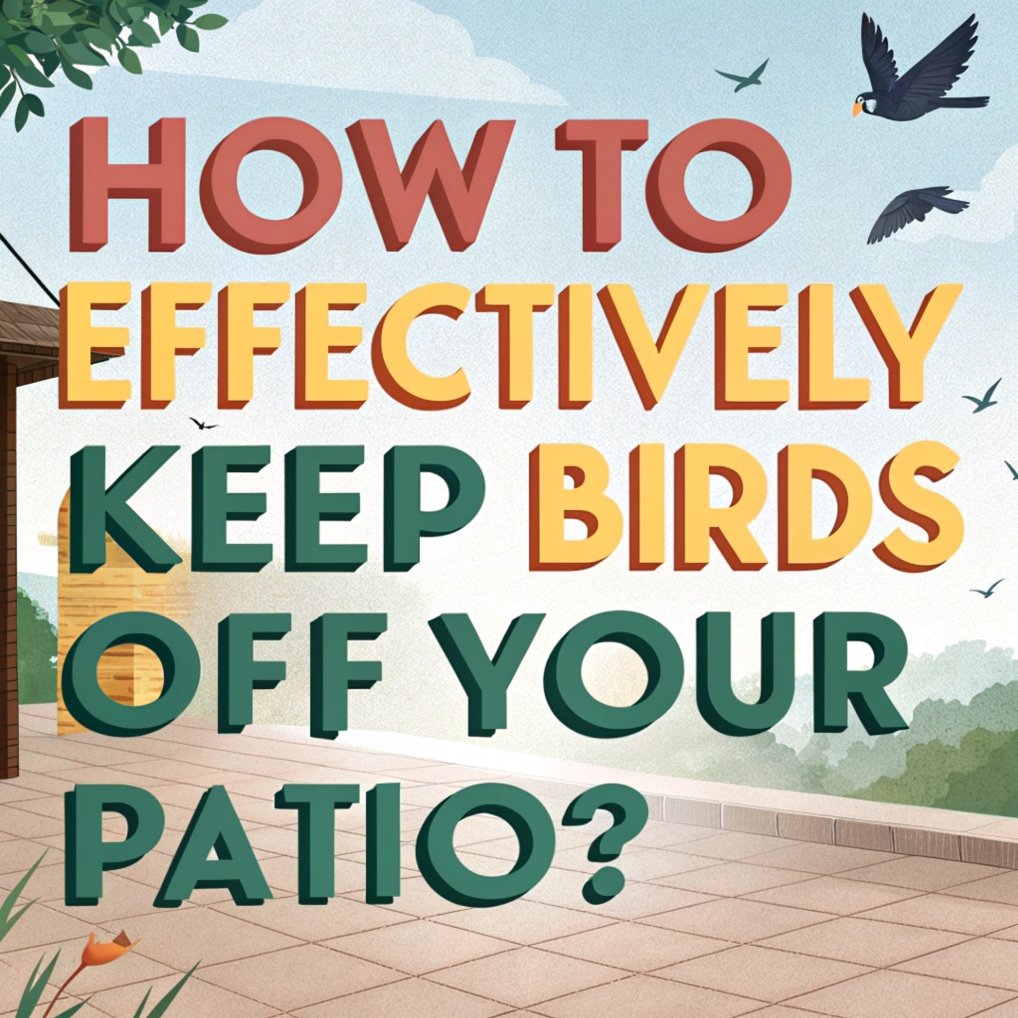
One of the most effective ways to keep birds off your patio is to eliminate their food sources. This strategy requires diligence but can significantly reduce bird activity. Start by being meticulous about cleaning up after outdoor meals.
Even small crumbs can attract birds, so sweep or wipe down your patio furniture and floor regularly. If you have fruit-bearing plants nearby, consider harvesting fruits promptly or using netting to prevent birds from accessing them.
Pet food is another major attractant. If you feed your pets outdoors, bring their food bowls inside when not in use. For bird feeders in your yard, consider relocating them further from your patio area.
While it’s enjoyable to watch birds at feeders, placing them too close to your patio can lead to unwanted messes. Additionally, manage your garbage properly. Ensure trash cans have tight-fitting lids to prevent birds from scavenging.
By removing these food sources, you make your patio significantly less attractive to birds, encouraging them to seek sustenance elsewhere.
Installing Physical Barriers: Netting and Spikes
Physical barriers can be highly effective in keeping birds at bay. Bird netting is a popular choice for patios, especially those with overhead structures.
This fine mesh creates a physical barrier that prevents birds from entering the space while remaining relatively unobtrusive.
When installing netting, ensure it’s properly secured and taut to prevent birds from becoming entangled. For a more open feel, consider using clear netting, which is less visible.
Another physical deterrent option is bird spikes. These harmless plastic or metal strips can be installed on ledges, railings, and other surfaces where birds tend to perch. The spikes make it uncomfortable for birds to land, encouraging them to find alternative spots.
When using spikes, place them strategically in areas where birds frequently land. It’s important to note that while effective, spikes can be visible and may not suit every aesthetic preference.
For a more discreet option, consider low-profile bird slides or sloped covers that achieve the same purpose with a sleeker look.
Utilizing Visual Deterrents: Reflective Objects and Decoys
Visual deterrents can be both effective and decorative ways to keep birds off your patio. Reflective objects are particularly useful as they create moving light patterns that birds find disorienting. Hang old CDs, reflective tape, or aluminum foil strips around your patio.
The constant movement and flashes of light will make birds uncomfortable and less likely to settle in the area. You can also use reflective pinwheels or wind spinners, which add a decorative touch while serving as bird deterrents.
Another visual deterrent strategy is the use of predator decoys. Plastic owls, hawks, or even snakes can be placed around your patio to scare away smaller birds.
For maximum effectiveness, move these decoys regularly to prevent birds from realizing they’re not real.
Some modern decoys even come with moving parts or sound effects for added realism. While using visual deterrents, it’s important to combine them with other methods for the best results, as birds can become accustomed to stationary objects over time.
Employing Sound Deterrents: Wind Chimes and Ultrasonic Devices
Sound can be a powerful tool in keeping birds away from your patio. Wind chimes serve a dual purpose – they create a pleasant ambiance for humans while producing sounds that birds find unsettling.
The unpredictable nature of wind chime sounds keeps birds on edge, making your patio a less desirable place for them to settle.
Choose metal chimes for the most effective deterrent, as they produce sharper tones that birds are more likely to avoid.
For a more high-tech approach, consider ultrasonic devices. These emit high-frequency sounds that are irritating to birds but generally inaudible to humans. Place these devices strategically around your patio, ensuring coverage of the entire area.
Some models come with motion sensors, activating only when birds approach, which can be more energy-efficient and less disruptive. However, be mindful of pets, as some may be sensitive to these sounds.
Combining sound deterrents with visual ones can create a multi-sensory barrier that’s highly effective in keeping birds at bay.
Creating an Aromatic Barrier: Natural Scents That Repel Birds
Birds have a keen sense of smell, and certain aromas can be effective in keeping them away from your patio. Citrus scents are particularly potent bird repellents.
Consider placing orange or lemon peels around your patio or using citrus-scented sprays on your furniture and railings.
Not only will this deter birds, but it will also add a fresh, pleasant scent to your outdoor space. Peppermint is another aroma that birds tend to avoid. Plant peppermint around your patio or use peppermint oil in a spray bottle mixed with water.
Other strong-smelling herbs like rosemary, thyme, and lavender can also help keep birds at bay while enhancing the beauty of your patio. Plant these in pots or garden beds near your seating area.
For a more concentrated effect, you can make your own bird repellent spray using a mixture of water and essential oils like peppermint, citrus, or eucalyptus.
Regularly applying these scents will create an aromatic barrier that birds find unappealing, encouraging them to find more hospitable areas.
Modifying the Habitat: Trimming Trees and Managing Water Sources
Modifying the habitat around your patio can significantly reduce its attractiveness to birds. Start by trimming nearby trees and bushes. Overgrown vegetation provides birds with shelter and potential nesting sites close to your patio.
By keeping plants well-maintained, you reduce these hiding spots and make the area less inviting. Pay special attention to branches that overhang your patio, as these can serve as convenient perches for birds.
Managing water sources is equally important. Birds are attracted to any available water, so eliminate standing water in your patio area.
This includes emptying birdbaths, fixing leaky faucets, and ensuring proper drainage in planters and other containers.
If you have decorative water features, consider adding moving elements like fountains, as birds are less likely to use flowing water. By reducing easy access to water, you make your patio less of an oasis for birds.
Remember, the goal is to create an environment that’s less hospitable to birds without completely eliminating the natural beauty of your outdoor space.
Using Motion-Activated Sprinklers: A Startling but Effective Method
Motion-activated sprinklers can be a surprisingly effective and humane way to deter birds from your patio.
These devices work by detecting movement and quickly releasing a short burst of water. The sudden spray startles birds, creating an unpleasant experience that discourages them from returning.
This method is particularly useful because it’s triggered only when needed, conserving water and maintaining its effectiveness over time.
When setting up motion-activated sprinklers, position them strategically to cover the most frequented areas of your patio. Adjust the sensitivity to avoid false triggers from smaller movements like leaves blowing in the wind.
This method not only deters birds but can also help keep other small animals away from your patio. As an added benefit, these sprinklers can help keep your plants watered.
However, be mindful of your guests and inform them about the system to avoid unexpected surprises during outdoor gatherings.
Implementing Proper Sanitation Practices: Keeping Your Patio Clean
Maintaining a clean patio is crucial in deterring birds. Regular cleaning not only keeps your outdoor space looking great but also removes potential food sources that attract birds. After every outdoor meal, make it a habit to thoroughly clean the area.
Sweep up crumbs, wipe down tables and chairs, and ensure no food residue is left behind. This practice is especially important if you frequently enjoy meals or snacks on your patio.
Pay attention to hidden areas where food particles might accumulate, such as cracks between deck boards or corners of outdoor rugs.
Use a pressure washer periodically to deep clean your patio surface, removing any built-up grime that might attract insects, which in turn attract birds.
If you have outdoor trash cans, ensure they have tight-fitting lids and are cleaned regularly to prevent odors that might draw birds.
By maintaining a clean patio, you not only make it less attractive to birds but also create a more pleasant environment for yourself and your guests.
Choosing Bird-Resistant Patio Furniture and Decor
When furnishing your patio, consider options that are less inviting to birds. Choose furniture with smooth surfaces that don’t provide easy perching spots. Avoid furniture with intricate designs or crevices where birds can nest.
Opt for materials that are easy to clean and don’t absorb moisture, as damp surfaces can attract birds looking for water.
Consider using furniture covers when the patio is not in use to protect surfaces from bird droppings and discourage perching.
For decor, select items that can double as bird deterrents. Reflective wind spinners or metallic pinwheels can add a decorative touch while deterring birds. Choose planters with narrow rims or sloped edges that don’t provide comfortable perching spots.
If you have outdoor lighting, opt for fixtures that don’t accumulate water or provide cozy nesting spots.
By thoughtfully selecting your patio furniture and decor, you can create an aesthetically pleasing space that’s naturally less attractive to birds.
Educating Family and Guests: Maintaining a Bird-Free Environment
Creating and maintaining a bird-free patio environment is a team effort. Educate your family members and guests about the importance of following bird-deterrent practices. Explain why it’s crucial not to leave food out or feed birds near the patio area.
Encourage everyone to clean up after themselves promptly, especially after meals or snacks outdoors. Make it a household rule to keep doors and windows closed when possible to prevent birds from entering enclosed patio spaces.
Create a simple list of dos and don’ts for maintaining a bird-free patio and display it in a visible area. This can include reminders to use provided covers for food, dispose of trash properly, and not encourage birds by feeding them nearby.
By involving everyone in these efforts, you create a consistent approach to bird deterrence. Remember, even well-intentioned actions like scattering breadcrumbs can undo your hard work in keeping birds away.
With everyone on board, maintaining a bird-free patio becomes a shared responsibility and a more achievable goal.
FAQs
Are there any humane ways to keep birds off my patio?
Yes, there are many humane methods to deter birds from your patio. Visual deterrents like reflective objects, sound deterrents like wind chimes, and scent-based repellents using natural oils are all effective and harmless to birds.
Physical barriers like netting can also be used safely if installed correctly. The key is to make your patio less attractive to birds without causing them harm.
How often should I change or move my bird deterrents?
It’s recommended to change or move your deterrents every few weeks. Birds can become accustomed to stationary objects, so regularly repositioning items like reflective deterrents or predator decoys helps maintain their effectiveness.
For scent-based repellents, reapply every few days or after rain. Regularly assessing and adjusting your deterrent strategy ensures long-term success in keeping birds away.
Can I use mothballs to keep birds away from my patio?
While mothballs are sometimes suggested as a bird deterrent, they are not recommended. Mothballs contain chemicals that can be harmful to birds, pets, and humans if inhaled or ingested.
Instead, opt for safer, natural alternatives like citrus peels or essential oil sprays, which are effective and environmentally friendly.
Will bird spikes damage my patio or harm birds?
When properly installed, bird spikes do not damage your patio or harm birds. They simply create an uncomfortable surface for landing, encouraging birds to find alternative perching spots.
Choose spikes made from durable, weather-resistant materials and follow installation instructions carefully. Remember, the goal is to deter birds, not injure them.
How can I keep birds away without affecting other wildlife?
To deter birds without impacting other wildlife, focus on bird-specific deterrents. Use visual and sound deterrents that primarily affect birds, like reflective objects or ultrasonic devices designed for bird control.
Avoid using broad-spectrum repellents or pesticides that might harm beneficial insects or small animals. Creating a balanced approach that discourages birds while maintaining a healthy ecosystem for other wildlife is key.

Hello, I’m Amelia White, the founder of birdsfanatic.com. As a lifelong bird enthusiast and spiritual seeker, I’ve always been fascinated by the mystical connections between birds and the human experience. On this site, I share my knowledge and insights into the symbolic meanings and spiritual significance of various bird species, exploring their roles in mythology, folklore, and cultural traditions. Join me on this journey into the world of birds, where we’ll discover the hidden wisdom and guidance that these magnificent creatures have to offer.

